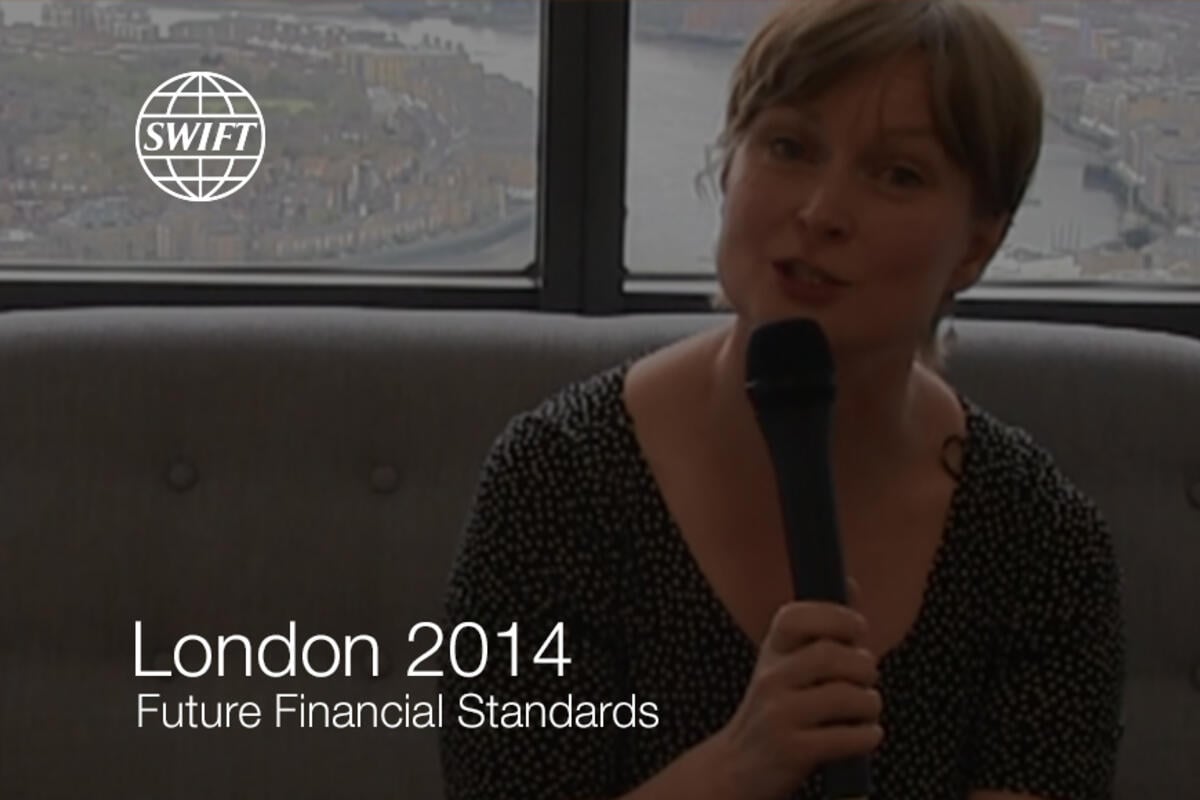What role can standards play in enabling the industry to meet its latest challenges? And what needs to happen for the full benefits of standardisation to be realised?
A new landscape
Post-crisis, the financial industry is confronted with unprecedented public scrutiny and commercial pressure. Regulators, charged with preventing further crises, need to identify threats to global stability in time to take action. Financial institutions need to comply with regulations and better manage their own risks. Both must ensure that new measures are effective, and at a time of shrinking margins and fierce competition, implementation also needs to be cost efficient.
We value the link between academic research and practice and hope this will be the start of a productive relationship between the Swift Institute and LSE.
The role of standards
Standards have an outstanding track record of increasing efficiency and reducing costs in many areas of the financial industry. But what role can standards play in enabling the industry to meet its latest challenges? And what needs to happen for the full benefits of standardisation to be realised? One way of finding an answer to these questions is to have a distinguished panel of academics, bankers, regulators and standardisers discussing and exchanging their views on the topic. That’s why on 25 March, the Swift Institute, Swift’s Standards Forum and the London School of Economics and Political Science (LSE) hosted a one-day conference at Level 39 in London focusing on standardisation in the financial industry.
Theory meets practice
In a welcome speech, Gottfried Leibbrandt, Swift’s CEO, and Professor George Gaskell, Pro-Director of Planning and Resources at the LSE, both emphasised the importance of bringing together practitioners and academics. “We value the link between academic research and practice and hope this will be the start of a productive relationship between the Swift Institute and LSE” said Professor Gaskell.
Many attendees enjoyed the lively interaction between academics and financial industry representatives. LSE student James Hamilton said: “I have enjoyed how this conference combines academic rigor, with business and client side perspectives. […] It’s interesting to have the two points of view.”
Keynote speaker Commissioner O’Malia
 Next on the agenda was the keynote address by Commissioner Scott D. O'Malia from the US Commodity Futures Trading Commission (CFTC). He began by noting that “today’s conference on the future of financial standards could not have come at a better time.”
Next on the agenda was the keynote address by Commissioner Scott D. O'Malia from the US Commodity Futures Trading Commission (CFTC). He began by noting that “today’s conference on the future of financial standards could not have come at a better time.”
Commissioner O’Malia’s speech (full text here) focused on disruptive change in financial markets and the need to embrace new technologies and approaches to rapidly innovate: “Just like Swift revolutionised the bank payment system several decades ago, it is now time for international regulators – working together with market participants – to standardise the massive amount of financial markets data and revolutionise our market oversigfht functions.”
Just like Swift revolutionised the bank payment system several decades ago, it is now time for international regulators to standardise the massive amount of financial markets data and revolutionise our market oversight functions.
Academic insights
Three academic research papers sponsored by the Swift Institute were presented at the event.
1. A critical and empirical examination of four currently used financial data collection processes and standards
This paper, which will be completed in May 2014, analyses specific standards in utilization (FIXML, ISO 20022, XBRL, SDRs & TRs) and assesses them according to a set of key criteria. It provides empirical evidence on how each standard contributes to solving data analysis problems.
During this presentation, Columbia Business School’s Director of Research Suzanne Morsfield emphasised the importance of obtaining the views of all the different stakeholders when developing a standard. She mentioned that “they all need to be around the table the entire time.”
2. A common financial language
This research examines the feasibility and potential shape of a common financial language (CFL). Alistair Milne, professor of financial economics at Loughborough University, said that creating a single common financial language is not a realistic proposition as the industry does not perceive it to be a priority. “It is the deal that matters, as this is where the profits are made. […] The back-book becomes a secondary issue” said Professor Milne.
3. Macroprudential oversight, risk communication and visualisations
Up next was Peter Sarlin from Goethe University in Frankfurt. His research aims to provide a basis for the use of visualisation techniques in macroprudential oversight in general and risk communication in particular.
EU and US regulatory differences
 After lunch, Head of Coventry Law School Stuart Weinstein, paraphrased Bernard Shaw by stating that EU and US regulatory regimes are “separated by a common language.”
After lunch, Head of Coventry Law School Stuart Weinstein, paraphrased Bernard Shaw by stating that EU and US regulatory regimes are “separated by a common language.”
“While the two regimes deliver broadly the same outcomes in respect of the key regulatory goals, the devil is in the detail and there may be technical differences” he noted.
Lost in translation
In the next presentation, Professor Andrei Kirilenko from the MIT Sloan School of Management shared his views on how to bridge the gap between “rules that are written by lawyers and then translated into lines of code by a software architect or a computer programmer.”
According to Kirilenko “regulations written for automated financial markets need to include a separate Technological Implementation and Data (TID) section describing the circuit architecture of each rule in a form of standardized logic gates, truth tables or other alternatives.” Circuit architecture can be efficiently implemented by software architects and developers. It could also include scenarios and data required to validate implementation.
The TID section should be a “safe harbour section and not a litigation target.”
Thought-provoking panel discussions
 Two lively panel discussions followed, chaired by Swift’s head of public affairs, Natasha de Terán, focusing on the challenges of regulatory implementation. The distinguished panel, comprising three academics, two bankers, three market infrastructures and four standardisers, explored the actions the industry can take to address these challenges.
Two lively panel discussions followed, chaired by Swift’s head of public affairs, Natasha de Terán, focusing on the challenges of regulatory implementation. The distinguished panel, comprising three academics, two bankers, three market infrastructures and four standardisers, explored the actions the industry can take to address these challenges.Closing thoughts
TowerGroup’s Research Director, Gert Raeves, LSE’s Associate Professor Susan Scott and Aite Group’s Senior Analyst, Virginie O’Shea shared their closing thoughts and views on the conference.
Gert Raeves noted that the challenges discussed “have more to do with the way we as an industry are structured.” He believes “it is more a supply chain problem than a regulatory problem.”
Susan Scott reiterated that standards have a particularly important role in bridging governance gaps between jurisdictions.
Virginie O’Shea urged the industry to move past cultural and political issues and to work effectively together.



